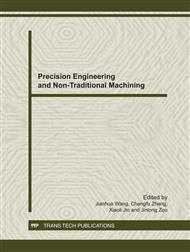p.542
p.548
p.552
p.559
p.563
p.567
p.572
p.576
p.580
Data-Driven Approach for Equipment Reliability Prediction Using Neural Network
Abstract:
BP neural network based data-driven method is proposed to predict reliability in this paper. The BP neural network prediction using Gradient Descent Method (GDM), Additional Momentum Gradient Descent Method (AMGDM) and Levenberg-Marquardt Method(L-M) based on numerical optimization theory of training algorithm are compared with different neuron number. The proposed approach is validated via age data collected from computer numerical control (CNC) machine tool in the field. The results from the proposed method show that perfect predicting performance is achieved under considering selecting suitable number of the hidden neurons and training algorithm. Remarks are outlined regarding the fact that BP neural network based on data-driven method is feasible, effective and adequate predicting accuracy can be obtained.
Info:
Periodical:
Pages:
563-566
Citation:
Online since:
November 2011
Authors:
Keywords:
Price:
Сopyright:
© 2012 Trans Tech Publications Ltd. All Rights Reserved
Share:
Citation:


